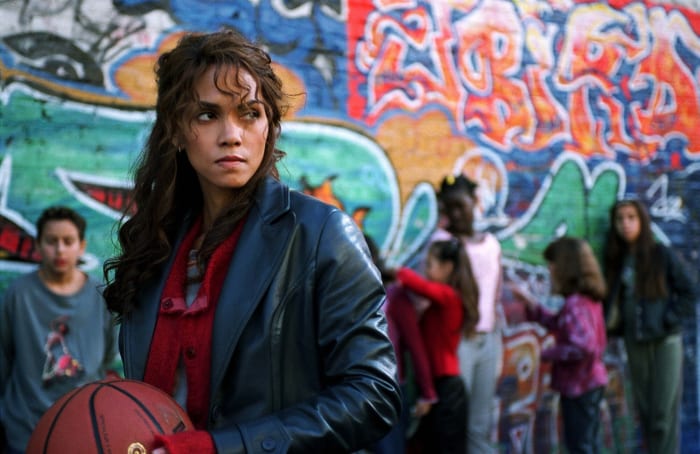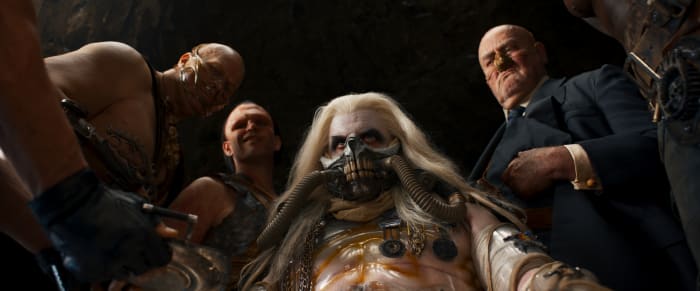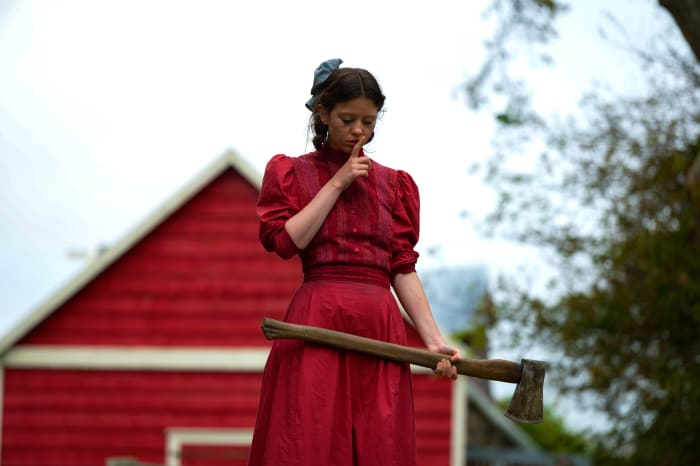- Home
- Quizzes
- My Quiz Activity
- Newsletters
- Sports Betting
- MY FAVORITES
- Add Sports/Teams
- SPORTS
-
NFL
- NFL Home
- Arizona Cardinals
- Atlanta Falcons
- Baltimore Ravens
- Buffalo Bills
- Carolina Panthers
- Chicago Bears
- Cincinnati Bengals
- Cleveland Browns
- Dallas Cowboys
- Denver Broncos
- Detroit Lions
- Green Bay Packers
- Houston Texans
- Indianapolis Colts
- Jacksonville Jaguars
- Kansas City Chiefs
- Las Vegas Raiders
- Los Angeles Chargers
- Los Angeles Rams
- Miami Dolphins
- Minnesota Vikings
- New England Patriots
- New Orleans Saints
- New York Jets
- New York Giants
- Philadelphia Eagles
- Pittsburgh Steelers
- San Francisco 49ers
- Seattle Seahawks
- Tampa Bay Buccaneers
- Tennessee Titans
- Washington Commanders
-
MLB
- MLB Home
- Athletics
- Arizona Diamondbacks
- Atlanta Braves
- Baltimore Orioles
- Boston Red Sox
- Chicago White Sox
- Chicago Cubs
- Cincinnati Reds
- Cleveland Guardians
- Colorado Rockies
- Detroit Tigers
- Houston Astros
- Kansas City Royals
- Los Angeles Angels
- Los Angeles Dodgers
- Miami Marlins
- Milwaukee Brewers
- Minnesota Twins
- New York Yankees
- New York Mets
- Philadelphia Phillies
- Pittsburgh Pirates
- San Diego Padres
- San Francisco Giants
- Seattle Mariners
- St. Louis Cardinals
- Tampa Bay Rays
- Texas Rangers
- Toronto Blue Jays
- Washington Nationals
-
NBA
- NBA Home
- Atlanta Hawks
- Boston Celtics
- Brooklyn Nets
- Charlotte Hornets
- Chicago Bulls
- Cleveland Cavaliers
- Dallas Mavericks
- Denver Nuggets
- Detroit Pistons
- Golden State Warriors
- Houston Rockets
- Indiana Pacers
- Los Angeles Clippers
- Los Angeles Lakers
- Memphis Grizzlies
- Miami Heat
- Milwaukee Bucks
- Minnesota Timberwolves
- New Orleans Pelicans
- New York Knicks
- Oklahoma City Thunder
- Orlando Magic
- Philadelphia 76ers
- Phoenix Suns
- Portland Trail Blazers
- Sacramento Kings
- San Antonio Spurs
- Toronto Raptors
- Utah Jazz
- Washington Wizards
-
NHL
- NHL Home
- Anaheim Ducks
- Boston Bruins
- Buffalo Sabres
- Calgary Flames
- Carolina Hurricanes
- Chicago Blackhawks
- Colorado Avalanche
- Columbus Blue Jackets
- Dallas Stars
- Detroit Red Wings
- Edmonton Oilers
- Florida Panthers
- Los Angeles Kings
- Minnesota Wild
- Montreal Canadiens
- Nashville Predators
- New Jersey Devils
- New York Islanders
- New York Rangers
- Ottawa Senators
- Philadelphia Flyers
- Pittsburgh Penguins
- San Jose Sharks
- Seattle Kraken
- St. Louis Blues
- Tampa Bay Lightning
- Toronto Maple Leafs
- Utah Hockey Club
- Vancouver Canucks
- Vegas Golden Knights
- Washington Capitals
- Winnipeg Jets
- NCAAF
- NCAAM
- Olympics
- Boxing
- Entertainment
- Lifestyle
- Golf
- MMA
- Soccer
- Tennis
- Wrestling
- More Sports
- RESOURCES
- My Account
- YB on Facebook
- YB on Twitter
- YB on Flipboard
- Contact Us
- Privacy Policy
- Terms of Service

The 20 most fascinating villain origin stories from the film world
Hollywood seems to love a villain origin story. These movies are useful not only for capitalizing on existing IP, but, as everyone knows, even the most evil and sinister villains usually have some sort of reason for why they became that way. At their best, villain origin stories help flesh out the psychologies and motivations of the antagonist, showing that darkness usually has some sort of root. Moreover, these films demonstrate why villains almost always become more fascinating than the heroes they oppose.
'Catwoman'

It might have been a bomb upon its initial release, but time has been kind to Catwoman, which stars Halle Berry as the title character, known in this iteration as Patience Phillips. Among other things, the film is notable for having a Black woman in a lead role in a superhero movie. In many important ways, the film was ahead of its time, and looked at in modern times, it’s extraordinary just what Berry is able to do with the role. One can’t help but wonder how the superhero genre might have evolved differently had it received a better reception.
'Star Wars Episode I: The Phantom Menace'

Despite its mixed reception, The Phantom Menace nevertheless provides a fascinating backstory for two of the most prominent villains in the Star Wars universe: Darth Vader and Emperor Palpatine. The decision to show Anakin Skywalker as a youth demonstrates the extent to which his turn to the dark side had deep roots in his childhood. Palpatine, meanwhile, is shown to have been a subtle and cunning schemer from the beginning, sowing the seeds to his takeover of the Galaxy both in his guise as a Senator and in his identity as Darth Sidious.
'Batman Returns'

Along with the Joker, the Penguin is the most iconic and beloved of Batman's villains. In Batman Returns, he is memorably portrayed by Danny DeVito, who shows his range with this character. Rather than just making him a source of comedy, Burton’s film shows the tragedy lurking behind that strand and misshapen facade. Even though he is still quite evil, the movie shows that there are reasons why he is the way he is, and given that his parents abandoned him, one can hardly blame his turn to darkness.
'The Godfather Part II'

The Godfather Part II manages to avoid the trap of so many other sequels by crafting a narrative that’s split between the past and the present. Robert De Niro steps into the role of Michael Corleone (played by Marlon Brando in the first film), and from the moment he appears, it’s clear that he’s a force to be reckoned with and not to be taken lightly. The film allows the viewer to gain a more nuanced appreciation for the ruthless crime boss that he would become later in his life, and his story and rise to power are just as compelling, if not more so, than his son’s.
'Birds of Prey'

Though there have been many people who have voiced and played Harley Quinn, arguably the best such performance is the one given by Margot Robbie. In Birds of Prey, Quinn finally gets her time to shine, and she’s joined by a number of other fascinating characters and powerhouse actresses, including Rosie Perez, Mary Elizabeth Winstead, and Jurnee Smollett-Bell. Robbie has given many memorable performances over the years, but she just seems to inhabit Quinn to such a degree that it will no doubt always be associated with her.
'Black Panther'

Black Panther is, of course, primarily about the title character, but the film also gives important insight into Killmonger, portrayed by Michael B. Jordan. As the film unfolds, the viewer comes to understand just how it is that the tragic circumstances of his life led him down the road to violence and brutality. Like the best villains, he actually has some good reasons for believing the way that he does, and though the audience is supposed to identify with T’Challa, it’s also hard not to feel at least a bit of a desire for Killmonger to emerge victorious.
'Minions: The Rise of Gru'

Not every franchise can be reliably entertaining, but Despicable Me certainly fits the bill. Steve Carell brings his inimitable voice talents to the character of the young Gru, and the film charts his rise to supervillainy. The Rise of Gru is filled with the same sort of color and kinetic pleasures that one often associates with Universal. Of course, no Despicable Me would be complete without the little yellow Minions, and they are as likable and delightful as always.
'Saw IV'

The sinister figure known as Jigsaw in the various Saw films gets a backstory in Saw IV, which helps the viewer to understand just what it is that makes John Kramer, the original Jigsaw, so determined to enact his peculiar vengeance on others. His life, like that of so many other notable villains, is marred by tragedy and misfortune, both because of his own cancer and his wife’s miscarriage. While this may not entirely justify the extraordinary lengths to which he goes to persecute those who he perceives to be evil, it does nevertheless demonstrate the extent to which he has genuine motivations that make sense psychologically.
'Furiosa: A Mad Max Saga'

Even though Furiosa is primarily about the main character, it also gives some important insight into Immortan Joe, the primary antagonist of the 2015 film Mad Max: Fury Road. In this film, he isn’t yet the desiccated creature he will become, though there are already signs of just how ruthless he is and how determined to create unpolluted offspring. Lachy Hulme gives a strong performance as the character, and it’s particularly fascinating to see the extent to which he recognizes Furiosa’s potential, even if he doesn’t yet realize how she will turn against him.
'Leatherface'

Few horror characters are as widely known as Leatherface, the fearsome killer of The Texas Chainsaw Massacre. In the film that bears his name, he gets his backstory, showing how trauma, abuse, and horrifying violence broke his mind and turned him into a monster. The film certainly doesn’t shy away from graphic depictions of violence, and while it may not always be subtle, it does, nevertheless, demonstrate the extent to which even the most deranged of killers come from somewhere.
'Pearl'

Mia Goth made quite an impression in the slasher film X, in which she plays two characters, one of whom is the murderous crone, Pearl. Pearl finally gets the backstory she deserves in the film that bears her name, and Goth is once again terrifying and absolutely compelling as the title character. She might appear to be girlish, but Goth makes it clear that there’s something deeply wrong and troubled with Pearl, which helps to explain why she ends up becoming the sort of homicidal maniac that is so much a feature of the slasher film.
'Hannibal Rising'

Few cinematic serial killers have cast as much of a spell as Hannibal Lecter, particularly as he’s been portrayed by Anthony Hopkins. In Hannibal Rising, he finally gets a bit of an origin story, and the film attempts to explain what made him become the monster he is in such films as The Silence of the Lambs. While the film may not attain the brilliance of some of the other films in the franchise, it’s nevertheless an interesting watch, and the late Gaspard Ulliel gives a memorable performance as Lecter himself.
'X-Men: First Class'

Few comic book villains are as powerful and terrifying as Magneto. In X-Men: First Class, he is portrayed by Michael Fassbender, who endows the character with a sinister sort of charisma. Among other things, the film sheds light on his motivations and the origins of his group, the Mutant Brotherhood. Given just how much the young Eric Lensherr endures at the hands of the Nazis — and later at those who would destroy all mutants — this film makes his actions, merciless as they sometimes are, much more understandable than they are in some other aspects of the franchise.
'Joker'

Todd Phillips offered his iconoclastic take on the famous character of the Joker, arguably one of the most famous villains in comic book history. Here is portrayed by Joaquin Phoenix, who brings his own nervous energy to the tragic and troubled character of Arthur Fleck. This is a darker and grittier version of the story than some might be expecting, but there’s no question that Phoenix is an inspired bit of casting. What’s more, the film demonstrates the darker ethos and aesthetic that comic book movies can take.
'Oz the Great and Powerful'

There have been many efforts to give a backstory and a richer characterization to the Wicked Witch of the West from The Wizard of Oz. In Oz the Great and Powerful, she is portrayed by Mila Kunis, and here, she is named Theodora. In this version, she’s a remarkably morally complex character, beginning as a good person with the best interests of Oz at heart but ultimately led astray. It’s an interesting and unique take on this famous villain, showing there is always more to the story.
'Wicked'

Based on the play by Stephen Schwartz and Winnie Holzman (which was itself based on the novel by Gregory Maguire), Wicked tells the story behind the infamous Wicked Witch of the West. Portrayed by Cynthia Erivo, Elphaba yearns to bring justice to the Animals of Oz, but she is stymied by the cunning Wizard (Jeff Goldblum), his minion Madame Morrible (Michelle Yeoh), and even her best friend Glinda (Ariana Grande). The film is moving, powerful, and filled with remarkable musical numbers, and it uses escapism to tell a story of the power of revolution.
'Cruella'

Emma Stone gives a sublime performance in Cruella, in which she portrays the title character. In this version of the story, she begins as Estella Miller, who yearns to be a fashion designer but finds herself under the thrall of the sinister Baroness (played by Emma Thompson). There’s much to enjoy about this film, from its gorgeous cinematography to the titanic performances given by its two leading ladies. It also adds a new layer to one of Disney’s most iconic and sinister villains.
'Maleficent'

Few Disney villains are quite as terrifying as Maleficent, and in 2014, she finally got her own backstory in the film that bears her name. Though the story can be a bit rough and uneven at times, there’s no question that Angelina Jolie is perfectly cast as the title character. She brings out both the strength and the vulnerability of this remarkable villain. Most notably, the film subverts the traditional story of the relationship between Maleficent and Aurora, adding a new spin on the classic story of Sleeping Beauty.
'The Hunger Games: The Ballad of Songbirds and Snakes'

President Coriolanus Snow is one of the most sinister figures in The Hunger Games, and in The Ballad of Songbirds and Snakes, he gets the backstory he so richly deserves. Tom Blyth gives a very memorable performance as the younger version of the character, and the film allows the viewer to see how he became the person that he would be: a ruthless dictator willing to do anything to hold onto power. Just as important, though, is his fraught relationship with Lucy Gray Baird, which will reshape his later life and career.
'Star Wars Episode III: Revenge of the Sith'

The Star Wars prequel trilogy as a whole is concerned with the tragic fall of Anakin Skywalker, who would go on to become the ruthless Sith Darth Vader. The third film, Revenge of the Sith, is like the third act in a tragic play, and it’s definitely the strongest of the three. As much as it focuses on Anakin’s own fall to the Dark Side, it’s also very much about Palpatine, the cunning politician who would ultimately manipulate his way into becoming the fearsome Emperor.
Thomas J. West III earned a PhD in film and screen studies from Syracuse University in 2018. His writing on film and TV has appeared at Screen Rant, Screenology, FanFare, Primetimer, Cinemania, and in a number of scholarly journals and edited collections
More must-reads:
- 20 of TV’s best female Black leads
- The most iconic movies and TV shows that take place in schools
- The 20 worst coworkers in movie history
- Type cast: 21 actors who always seem to play the same character
- The Breakfast Club cast reunited for the first time in 40 years
Breaking News
Customize Your Newsletter
 +
+
Get the latest news and rumors, customized to your favorite sports and teams. Emailed daily. Always free!
PRIVACY POLICY EDITORIAL POLICY CONTACT US
ABOUT YARDBARKER TERMS OF SERVICE
Use of this website (including any and all parts and
components) constitutes your acceptance of these
Terms of Service and Privacy Policy.
This site is for entertainment purposes only.
There is no gambling offered on this site.
Gambling Problem? Call 1-800-Gambler.
